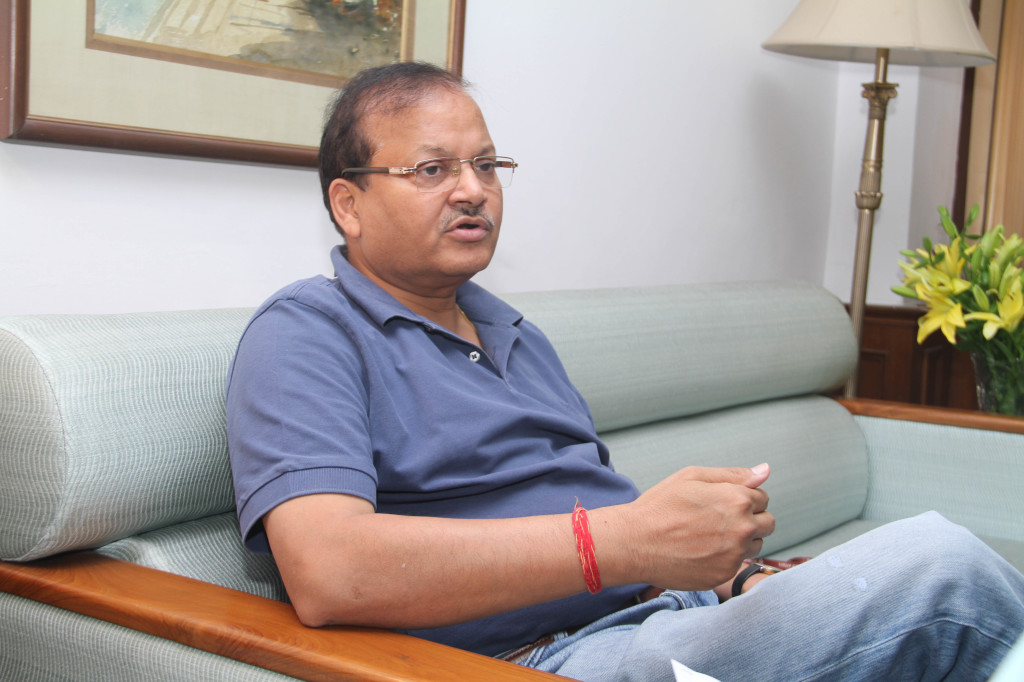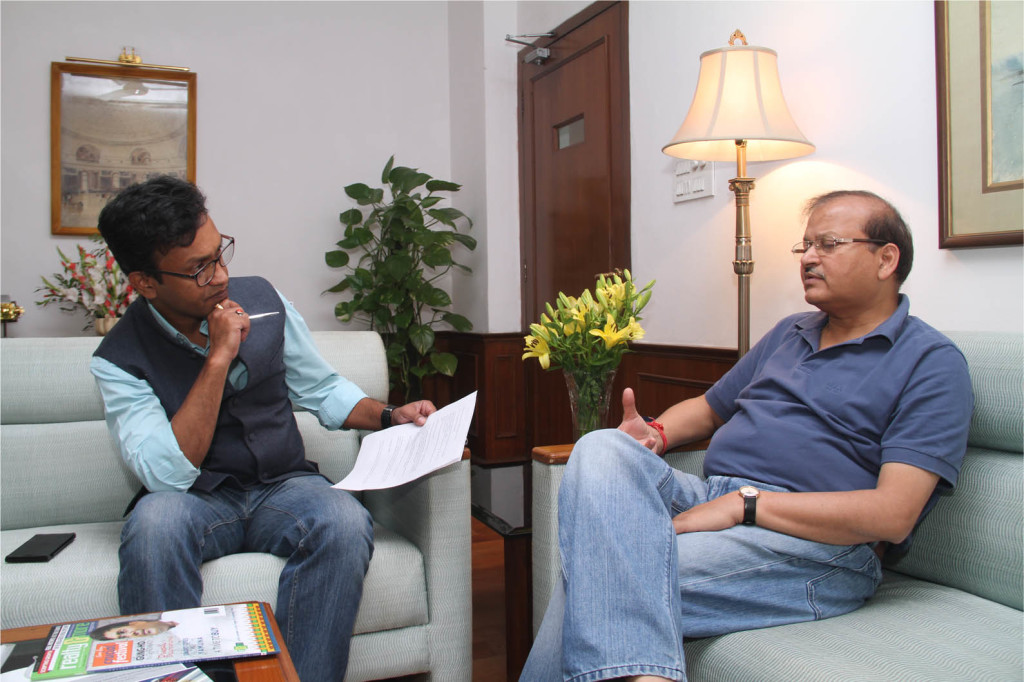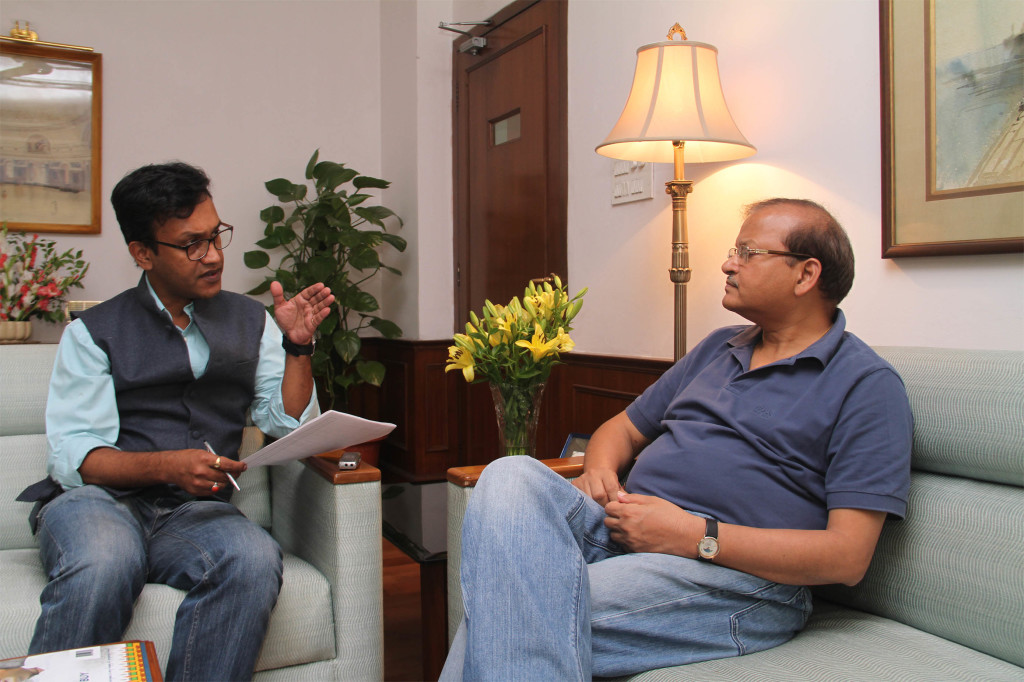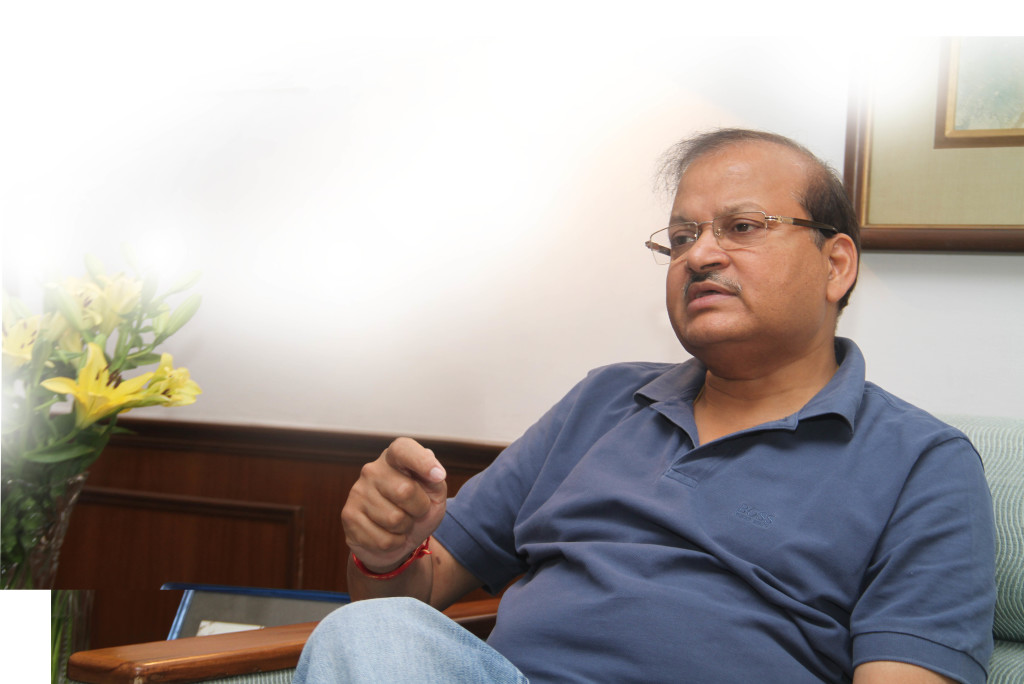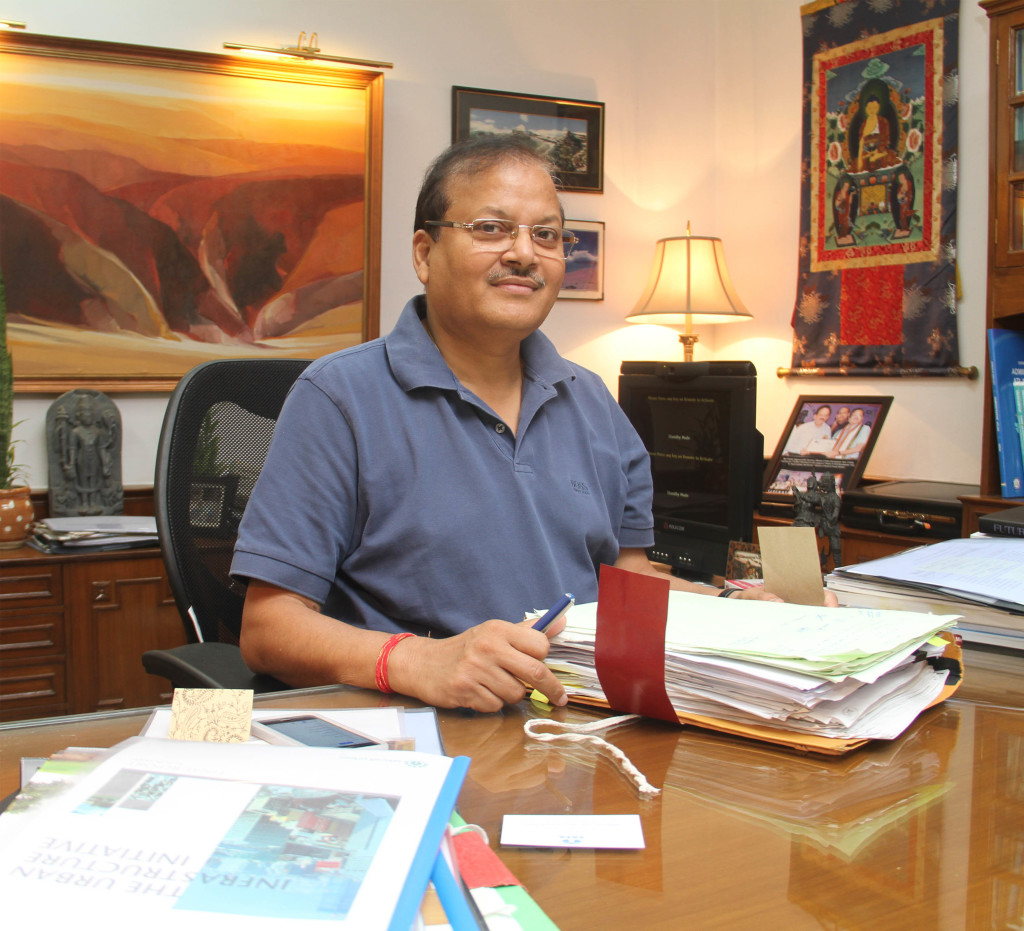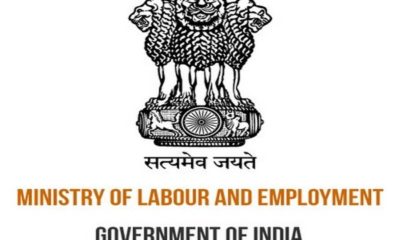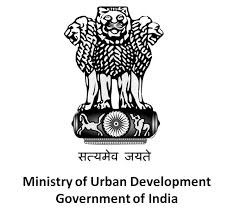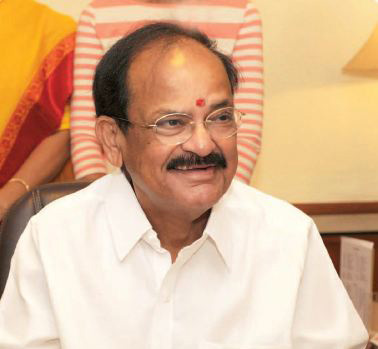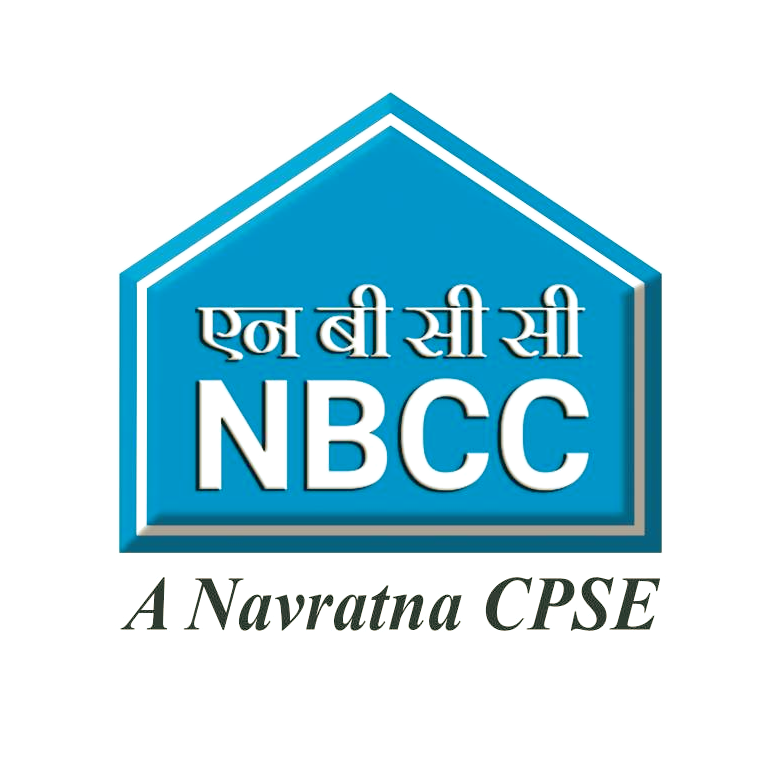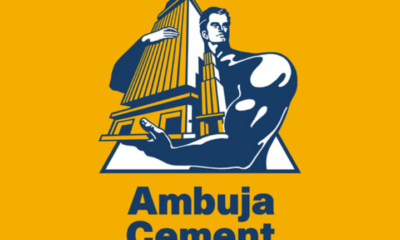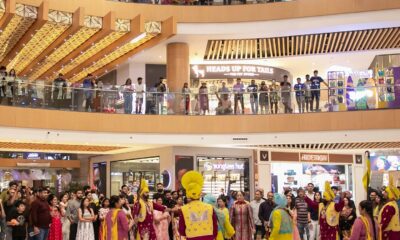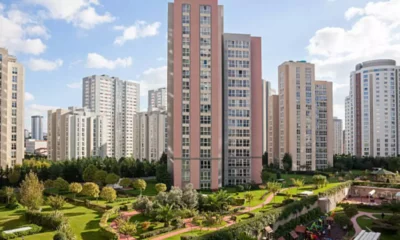Interviews
Exclusive Interview of Shankar Aggarwal, UD Secretary


There is a definite buzz in the corridors of the Union Urban Development Ministry at Nirman Bhavan in Lutyen’s Delhi. With the change in Government, new ideas have come in from the very helm, resulting in a pivotal shift in the way the Government views urban development. In an exclusive interview with Reality and More Editor Palash Roy, Urban Development Ministry Secretary Shankar Aggarwal talks at length on what important elements comprise the Government’s vision and strategy in the mega plan to develop urban India
PR : What are the major initiatives your ministry is taking?
SA : The major initiatives taken by the Government include Swachh Bharat, under which we are not only trying to make the country absolutely neat and clean but we will do it positively by October 2, 2019. There are two components of this, one is a soft component and the other one is the physical infrastructure component. The first component is to bring in a change in the mindset which is a difficult job, but unless we do that the entire effort will not be sustainable. So our idea in the next five years is to be able to bring in a paradigm shift in the way people think and in the way people react to uncleanliness.
Besides Swachh Bharat, our other initiatives include urban renewal of 500 cities. For example, in the Jawaharlal Nehru National Urban Renewal Mission (JNNURM) we were taking only 65 cities. Moreover, there were a lot of shortcomings in that particular programme. Now the idea is to take up 50 cities instead of 65, and to adopt a programme-based approach, wherein we will look at each city holistically and devise appropriate urban development and urban renewal programmes for that particular city.
The next big ticket initiative is the development of 100 Smart Cities. The idea is to take advantage of technology and to make these cities smarter so that many more jobs can be created and lived in the cities becomes much smoother.
PR : Can you prioritise your ministry’s focus areas. What comes first – Swachh Bharat, Smart Cities?
SA : The first and foremost is Swachh Bharat. That is very very important. So that is our top priority. The second priority is the development of 500 cities. Along with that is the development of 100 Smart Cities.
PR : What are the parameters and the eligibility criteria to be selected as a Smart City?
SA : We have more or less completed it. We have evolved the criteria for selection and identification of 100 Smart Cities. Primarily, we will be taking up those cities which are satellite towns of megacities. We will also take out some mid-sized towns and also take care of all state capitals as well as Union Territories.
PR : The state capitals and Union Territories comprise one-third of the list. By when are you going to have a full list of 100 smart cities?
SA : No, they haven’t been identified yet. I think within a month or two we will be able to finalise the names of the Smart Cities. However, we have been able to almost finalise the criteria for selection, which as I said, includes taking care of state capitals, Union Territories, satellite towns of megacities, plus those who have got huge potential in terms of creation of employment opportunities.
PR : When you say satellite towns, does it also mean towns adjoining Delhi such as Gurgaon, Noida, Greater Noida, etc?
SA : Yes,absolutely!
PR : The Union Budget allocated Rs7,060 for the 100 Smart Cities, which makes it a little over Rs 70 crore per city. Don’t you think this amount is too small?
SA : There is a little misnomer. There has been an allocation of Rs 7,000 crore for the Ministry of Urban Development, it is only a Budget provision. But whether this entire money will be available for Smart Cities or not, it is not there. Whatever money will be required for the Smart City project will come from the Government, that is not a problem. So don’t look it that way, then it will look even smaller. But see, this year we will be spending hardly any money on the Smart City project. In subsequent years we will get enough money.
PR : Will the National Buildings Construction Corporation (NBCC) have a major role in the creation and development of Smart Cities?
SA : I will not be able to say whether NBCC will be playing a major role or not, but NBCC as you know is a Navaratna organisation, and it is doing wonderfully well. Their quality is very good. They are very prompt in taking action. They adhere to timelines. On the Smart City project, the private sector has to participate, but NBCC will definitely have a role to play.
PR : Will you be also asking the state governments to give their presentations on the cities they want to be selected as smart cities?
SA : Absolutely. Identification of these 100 Smart Cities will be in consultation with the state governments. After we are able to finalise our concept paper within a month or two, we will have this process.
PR : Coming to the national capital now, what is the status of the much awaited Delhi Building bylaws?
SA : We are working very actively on that. We are trying to finalise our building bylaws by the end of the current calendar year. So by December-end we shall be out with the new bylaws.
PR : What is the ‘people-centric approach’ of the Urban Development Ministry?
SA : People have to be the focus in all our policy matters. We are working for the citizens of this country. Many a times our policies get influenced by the concerns of the regulator. What we are saying is that our policies have to be in tune with the expectations and aspirations of the people, so policies have to be people-centric and citizen-centric.
PR : In which cities are you planning the Metro Rail services?
SA : You see the Government has already stated its intention of introducing Metro Rail in all towns having a population of more than one million. However, it depends upon the state governments. They have to take the initiative. If they send the proposals, we will certainly look into them.
PR : When it comes to urban infrastructure and urban mobility, which are the states which are very proactive?
SA : I would say in terms of urban mobility all the states are very active and very excited. Some states have already done their homework and some are in the process of creating projects. The top three states would be Tamil Nadu, Andhra Pradesh , and then Gujarat.
PR : For capacity-building in metro towns, will you be taking the help of global companies?
SA : Absolutely. Most of the investment will come from the private sector. And if they are getting investments in this particular area, they may take the help of multination organisations as well.
PR : What are your specific plans for optimum utilisation of urban land?
SA : Land is very precious. So wherever land is available, we need to use that in the most optimal manner, that is higher FAR (Floor Area Ratio) and higher density. Wherever it’s possible within the framework of rules and regulations, that will be done.
PR : Do you have any specific plans to make municipalities financially self dependent?
SA : Unless municipal bodies become financially sustainable, they will not be able to sustain development. We may give them a little bit of money, but unless they are in a position to take up these projects unless they are able to generate revenue from their own resources, they will not be able to fund these activities.
PR : Any plans on bond issuance by municipal bodies?
SA : We have not given much thought to it. But we are working on this
PR : In Delhi, Bus Rapid Transit System (BRTS) has not been successful. Still, are you planning BRTS for other cities?
SA : As a concept, the BRTS is a very good concept. But it has to be implemented in those areas where there is potential for BRTS. It can be successful… Ahmedabad is a very good example where it can be successful. Indore is another good example of successful implementation of BRTS.
PR : What is the status of tramways?
SA : Tramways are again a very attractive proposition. But tramways are generally feasible and successful where the population density is a little low and there is congestion.
• Our idea in the next five years is to be able to bring in a paradigm shift in the way people think and in the way people react to uncleanliness.
• The idea is to take up 500 cities instead of 65, and to adopt a program-based approach, wherein we will look at each city holistically and devise appropriate urban development and urban renewal programmes for that particular city.
• The first and foremost is Swachh Bharat. That is very very important. So that is our top priority. Second priority is the development of 500 cities. Along with that is the development of 100 Smart Cities.
• We have evolved the criteria for selection and identification of 100 Smart Cities. Primarily, we will be taking up those cities which are satellite towns of megacities. We will also take out some mid-sized towns and also take care of all state capitals as well as Union Territories. I think within a month or two we will be able to finalise the names of the Smart Cities.
• Whatever money will be required for the Smart City project will come from the Government, that is not a problem
PR : What is the status of opening up of Outer Delhi area for housing projects?
SA : We will be taking up satellite towns of Delhi for developing them as Smart Cities. So naturally the outer areas of Delhi will come into that.
PR : Delhi Development Authority’s (DDA) housing scheme has recently been closed. But DDA’s construction quality has always been a concern. What are you doing or have done to address that?
SA : The Government policy is very clear that we wiII not compromise on the quality. And if there are any shortcomings on quality, we will certainly take necessary action.
PR : What are you doing to get DDA’s encroached land released?
SA : We have given clear instruction to DDA that they have to get all encroachments removed. We cannot afford to and we cannot allow anti social elements to continue with encroachments. However there are large tracts that have been occupied by the poor sections of the society, so those have been converted to some kind of slums. So we have to be proactive in the redevelopment of such areas.
PR : Redevelopment of North Avenue and South Avenue was also on the cards. What is the status of that?
SA : That is also going on. We have to finalise the design and that call has to be taken by the House committees.
PR : Any specific plans to decongest the metro cities?
SA : For all these metros we got to have a very robust city urban mobility plan and once we have an urban mobility plan, we will start working on that, and we will see what needs to done – be it the Metro Rail, or BRT or whatever.
We think by six months’ time, we will be able to get urban mobility plans for each of these cities ready. Once the plan is ready, we will start working, whether LRT is required, or BRT is required, or Metro Rail or whatever.
PR : Since you are talking about Metro Rail. what is your plan of expansion of Metro rail in the interiors of the cities adjoining Delhi?
SA : Wherever required and why not? But as I said, the call has to be taken by the state governments. If they are proactive, and they want it, we will be there to hold their hands and stand by them
• On the Smart City project, the private sector has to participate, but NBCC will definitely have a role to play.
• Identification of these 100 Smart Cities will be in consultation with the state governments. After we are able to finalise our concept paper within a month or two, we will have this process.
• We are trying to finalise the Delhi building bylaws by the end of the current calendar year. So by December-end, we shall be out with the new bylaws.
• Some states have already done their homework and some are in the process of creating projects. The top three states would be Tamil Nadu, Andhra Pradesh, and then Gujarat.
• Wherever land is available, we need to use that in the most optimal manner, that is higher FAR and higher density.
• Ahmedabad is a very good example where it can be successful. Indore is another good example of the successful implementation of BRTS.
• We have given clear instruction to DDA that they have to get all encroachments removed. We cannot afford to and we cannot allow anti-social elements to continue with encroachments.
-

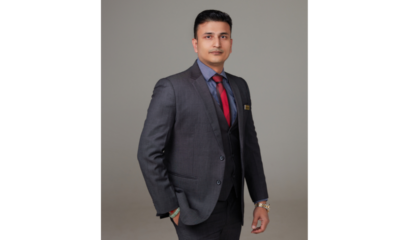

 Interviews4 weeks ago
Interviews4 weeks agoHigh Rental Yield, Price Appreciation, Stable Growth, Make Sydney an Ideal Realty Investment Option: Haansal Estate
-

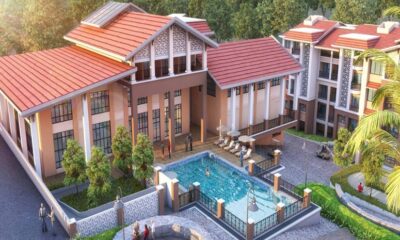

 News3 weeks ago
News3 weeks agoManasum Senior Living Launches IKIGAI GOA, A Senior Living Community in North Goa, in collaboration with Prescon Homes
-



 News2 weeks ago
News2 weeks agoKW Delhi 6 Mall Onboards New Brands
-

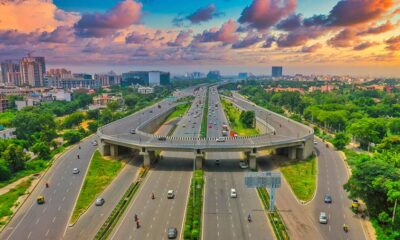

 News3 weeks ago
News3 weeks agoBridging India Divide: Top 5 Tier- 2 Cities to Focus On
-

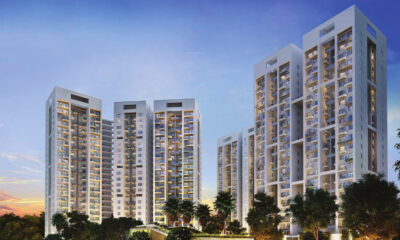

 News1 week ago
News1 week agoGodrej Properties Sells Rs 3k cr+ Homes of Godrej Zenith, Gurugram, within 3 days
-



 News2 weeks ago
News2 weeks agoCommercial Realty Gets Tech Savvy: Fast Construction, Enhanced Convenience
-

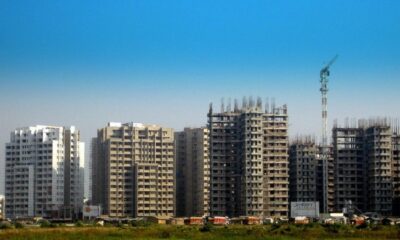

 News3 weeks ago
News3 weeks agoMultipoint Connection – A Definite Boon
-

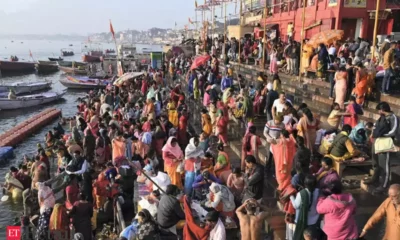

 News3 weeks ago
News3 weeks agoSacred Cities See a Retail Boom as Spiritual Tourism Surge: CBRE Report





